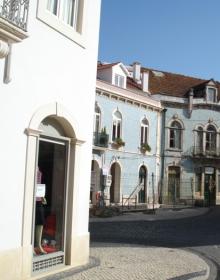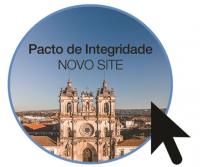- HOME
- MONUMENT
- VISIT OUR MONUMENT
- HERITAGE LEARNING
- ALCOBAÇA
- MONASTERIRES ROUTE

Alcobaça
The history of the town of Alcobaça and its modern-day existence are indissociably linked to the almost seven century-long presence of the Cistercian Order in the town. The Order built one of the largest Cistercian monasteries in the world here at the confluence of the rivers Alcoa and Baça, after being granted a site by King Afonso Henriques.
Nevertheless, the origins of Alcobaça date back to the Roman period. The name the ancient settlement being Helcobatie.
Later the settlement took on the Arabic name of Al-cobaxa, made up of the article al and the word cobaxa meaning rams, which were a common feature on the hilly landscape around the town. The article al is common to both the name of the town and the names of many parishes in the municipality, such as Alfeizerão, Aljubarrota and Alpedriz.
From the 12th century onwards the Monastery established a noteworthy, highly productive farming system in the Alcobaça coutos*. In addition to their religious and cultural activities, the monks achieved remarkable feats in terms of land settlement.
There were 13 townships in the Alcobaça coutos: Alcobaça, Alfeizerão, Aljubarrota, Alvorninha, Cela, Cós, Évora de Alcobaça, Maiorga, Paredes da Vitória, Pederneira, Santa Catarina, São Martinho do Porto and Turquel.
King Manuel I granted Alcobaça its foral or charter in 1514. In the mid-17th century most of the coutos already belonged to the inhabitants of the towns and municipalities.
On 13 October 1833 the monks abandoned the Monastery and in 1834 part of it was sold by public auction. Of the 13 townships only two remain as municipalities: Alcobaça and Nazaré (formerly known as Pederneira).
Alcobaça was granted the status of city in 1995. Today the urban centre, through which the rivers Alcoa and Baça flow, is a harmonious collection of streets and houses around the monumental complex that is the Monastery and its former external buildings.
The main economic activities in Alcobaça are farming, more specifically fruit farming, tourism and the faiance and glass crystal industries. The tertiary sector accounts for 49% of the active population, followed by the secondary sector with 31% and the primary with 19%.
* Translator’s note: a couto was a special set of territories which, under the feudal system, were exempt from the authority of the King and where special economical, political and judicial regimes applied.
SERVICES - ACTIVITIES




